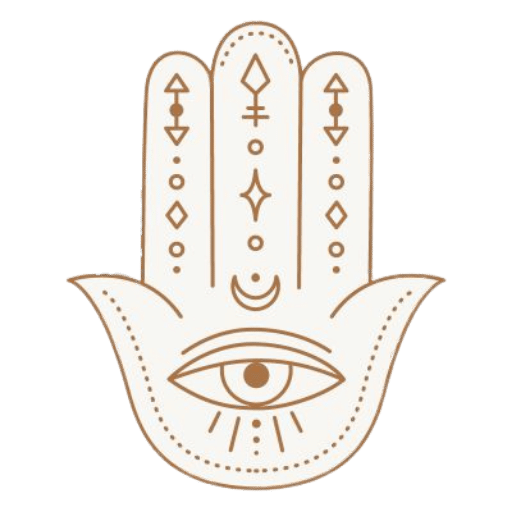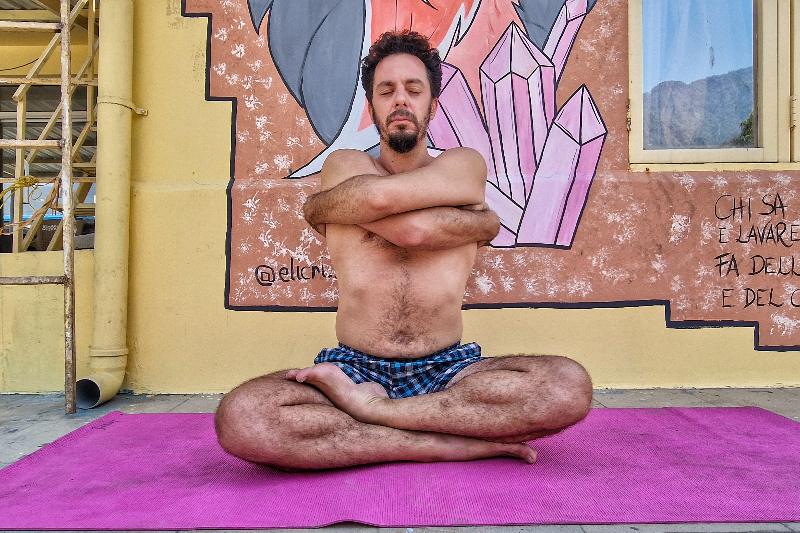
Kundalini Yoga for Heart Chakra – Cleanse, Balance, Awaken, and Open Anahata Chakra
Cardio-stimulating asana, isotonic exercises, and powerful breathing techniques from the Himalayan tradition of Kriya Yoga
In this unique and empowering Heart Chakra Kundalini Yoga practice, specifically designed for Anahata, we invite you to embark on a journey of self-discovery and heart-centered transformation. Drawing from the rich wisdom of the Himalayan tradition of Kundalini and Kriya Yoga, this practice goes beyond the physical realm to ignite the energy of the heart center.
Through a combination of isotonic exercises and cardio-stimulating postures, you will experience a dynamic and energizing flow that activates the heart chakra, allowing love, compassion, and emotional balance to blossom within you. As you move through the practice, you will cultivate a deep connection with your inner self and open your heart to the world around you.
Breathing exercises, such as bhastrika pranayama, play a vital role in this practice, helping to channel and expand the flow of vital energy, or prana, throughout your being. These powerful techniques enable you to connect with the subtle energy of the heart, harmonizing your physical, mental, and spiritual well-being.
Join us on this transformative journey as we explore the profound healing potential of Kundalini Yoga for the Heart Chakra. Whether you are seeking emotional healing, enhanced self-love, or a greater sense of connection with others, this practice offers a pathway to unleash the radiant power of your heart. Get ready to dive deep into the realm of the heart chakra and experience the transformative magic of Kundalini Yoga.
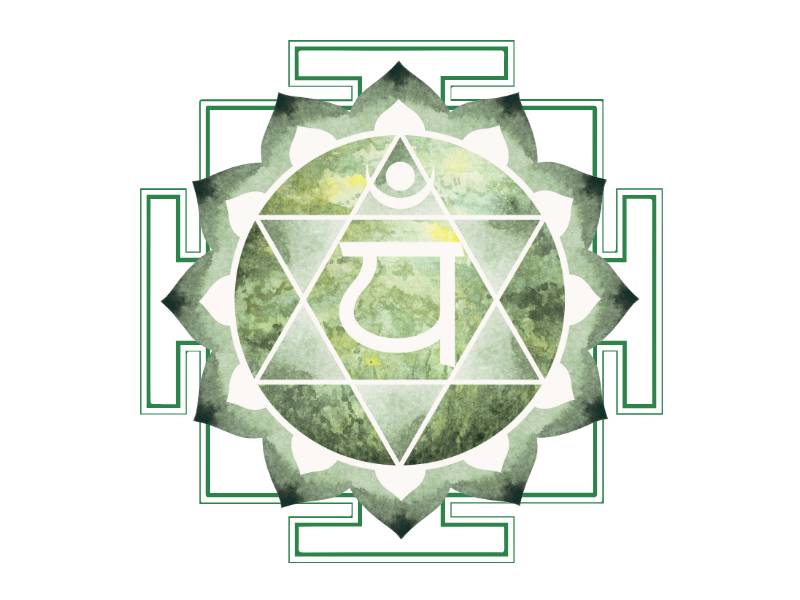
Anahata: The Heart Chakra
- Color: Green (sometimes associated with Pink)
- Element: Air
- Sense: Touch
- Gland: Thymus gland
- Nerve Plexus: Cardiac plexus
- Yantra: Hexagram (Star of David)
- Beej Mantra: “Yam”
Anahata Chakra, also known as the Heart Chakra, holds a significant place in the system of chakras. Located at the center of the chest, it is considered the bridge between the lower (Mooladara, Manipura, Swadistana) and higher chakras (Vishudda, Ajna, Sahasrara), representing the integration of the physical and spiritual aspects of our being.
Anahata is associated with love, compassion, healing, and emotional well-being. When the Heart Chakra is balanced and harmonious, it allows us to experience deep connections with ourselves, others, and the world around us.
It is the seat of unconditional love, forgiveness, and empathy, nurturing our relationships and fostering a sense of harmony and unity.
Anahata Chakra invites us to embrace vulnerability, heal emotional wounds, and open ourselves to the transformative power of love. Through practices such as this mixed practice kriya described here, we can activate and balance this vital energy center, unlocking the immense potential for compassion and connection that resides within us.
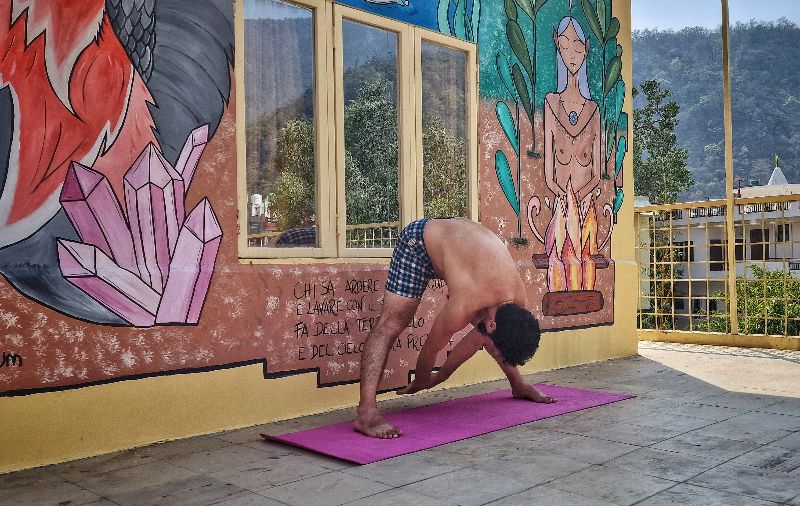
Elements Used in This Kundalini Kriya for the Heart Chakra
The elements described here are illustrated as they should be practiced for the sake of this kriya, refer to their relative articles for more information about how to practice each of these exercises and their most common variations.
Bhastrika Breathing
- Stand in a strong wide legged tadasana, with the spine straight and the hands resting on the knees or by your side. Feet are hip distance apart, parallel to each other, a slight internal rotation of the tight helps keeping the lower back open, steady, and protected.
- Begin Bhastrika Pranayama by taking a deep inhalation through both nostrils, filling the lungs with air. Simultaneously raise both arms straight out in front of you, palms facing forward.
- As you exhale forcefully through the mouth with an “ah” sound and pull the navel in towards your spine, lower the arms down with elbows bent and close to the external side of your ribs. Hands close in a fist but the thumb is left sticking out towards your midline.
- Continue this rhythmic movement of the arms, raising them on the inhale and lowering them on the exhale, while maintaining the forceful breath through the nose or mouth as instructed.
- Throughout the practice, keep your focus on the breath and the movement of the arms, synchronizing them.
In this variation, the thumbs are kept out (extended) as part of the hand posture. This specific hand position is believed to enhance energy flow and balance during practice.
Check the full article:
> Bhastrika Pranayama: Benefits, Steps, and Precautions Of Bellow Breathing
Uttita Lolasana
- Stand erect with the feet wide, about 1 meter apart (3/3.5 feet)
- Inhale, raise the arms over the hand and keep the elbows straight
- Flex the wrists forward so that the hands hang limp
- Bend forward and swing the trunk down, hinging from the hips (anterior pelvic tilt), while exhaling forcefully from the mouth.
- Allow the arms and eventually the head to swing through the open legs
- Engaging your core, return smoothly to the erect position with both arms reaching up.
This is one round.
Check the full article:
> Utthita Lolasana [Swinging Standing Pose] How To & Benefits
Hanuman Dandasana
Hanuman Dandasana is a somehow obscure exercise, not many yogis practice nowadays. It is though, an incredibly powerful asana, a dynamic isotonic exercise that is both a strengthening and a stretching pose.
Variation 1 – Hanuman Dandasana for Beginners
- Start in high plank (kumbhakasana/phalakasana)
- Send your right leg next and outside your right palm, while keeping the rest of the body as it is (a sort of lizard pose with your arms straight).
- Return to high plank.
- Send your left leg next and outside your right palm.
This is one round
Variation 2 – Cardio Hanuman Dandasana
This variation is very similar to the first version, but this time you’ll switch leg by jumping, without returning to high plank. This means the plank will only be held at the beginning of the exercise.
Variation 3 – Full Advanced Hanuman Dandasana
Choose variation 1 or variation 2.
Each time you send one of the legs forward to the outside of your extended arms, perform a chaturanga push-up: arch your back while bending at your elbows with them pointing straight backward, roll your shoulders back and bring your chest up, then return your spine to neutral.
Check the full article:
> Hanuman Dandasana: A Less Known Dynamic Posture For Core Strength
Ujjayi Breathing
Ujjayi breath, literally “victorious breath”, is a yoga breathing technique that involves creating a soft, whisper-like sound in the back of your throat during both inhales and exhales. While traditionally Ujjayi is performed entirely from the nose, in this kriya we’ll exhale from the mouth.
Here are the steps to perform ujjayi breath for this kriya:
- Sit in a comfortable crossed-legged position
- Create a slight constriction in your throat, similar to when you want to fog a glass with your breath.
- Close your eyes, spread your arms wide by your side and inhale through your nose, making a hissing sound with the throat constriction.
- Exhale from your mouth, constrict the back of your throat to create a soft, whisper-like sound. Bring your arms towards the front of your chest and, at the end of the exhalation, hug yourself tightly, reaching back as far as you can with your hands.
A few tips to perform Ujjayi breathing properly:
- The sound should be similar to the sound of ocean waves or the sound of wind blowing through the trees.
- Try to keep the sound steady and even throughout both the inhale and exhale.
- Continue breathing in this way for several rounds, focusing on the sound and the sensation of the breath moving in and out of your body.
- You can gradually increase the length of your inhales and exhales as you become more comfortable with the technique.
Ujjayi breath is believed to help calm the mind, reduce stress and anxiety, improve concentration and focus, and increase overall awareness and mindfulness. It can also be used during yoga practice to help deepen your breath and enhance your physical movements.
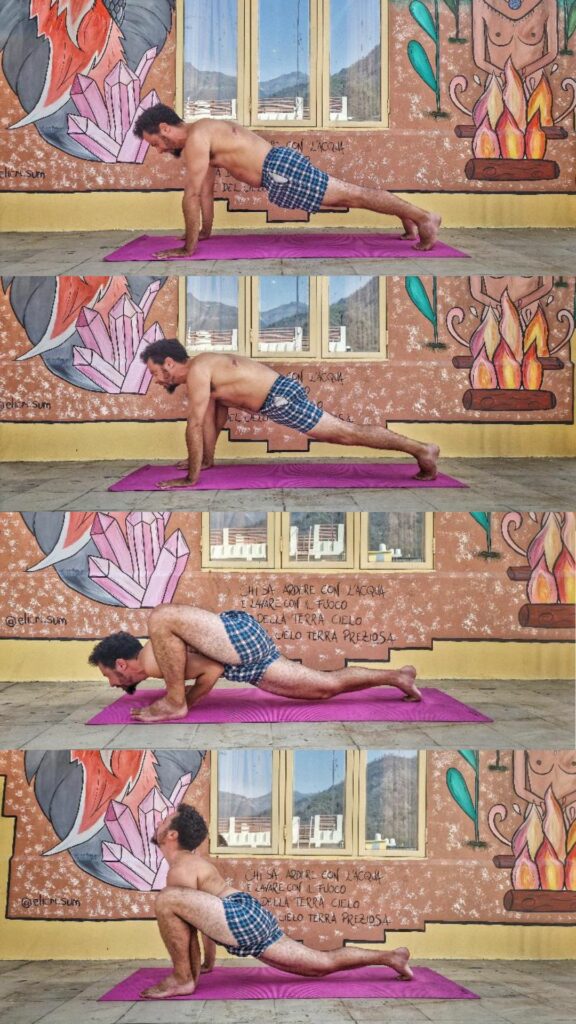
How to practice this Kundalini Yoga for the Heart Chakra [Anahata]
Step 1: Utthita Lolasana (3×10 rounds)
Perform 30 full rounds of Utthita Lolasana as described above. The rounds should be divided into 3 cycles. Between each round, rest for a few seconds in Standing Savasana
Step 2: Bhastrika (2×30 rounds)
This step can be performed either standing or in easy crossed-leg position.
Perform 60 full rounds of Bhastrika breathing as described above. The rounds should be divided into 2 cycles.
Between each round, rest for a few seconds in Standing Savasana or an easy sitting position.
Step 3: Utthita Lolasana (3×10 rounds)
Perform 30 full rounds of Utthita Lolasana as described above. The rounds should be divided into 3 cycles.
Between each round, rest for a few seconds in Standing Savasana
Step 4: Bhastrika Variation (2×30 rounds)
This step can be performed either standing or in easy crossed-leg position.
Perform 60 full rounds of Bhastrika breathing. The arm movement though is different here.
Extend your arms by the side of your chest in a “cactus position”, upper arms parallel to the floor and forearms perpendicular, bend at 90 degrees.
Inhale open the arms, extend close them in front of your chest and heart center, keep the upper arms always at shoulder level. The rounds should be divided into 2 cycles of 30 repetitions each.
Between each round, rest for a few seconds in Standing Savasana or easy sitting position.
Step 5: Hanumandandasana (10×2 rounds)
Perform 20 full rounds of Hanuman Dandasana as described above. The rounds should be divided into 2 cycles, remember that to complete one round both the right and the left leg should be brought forward once.
Between each round, rest for a few seconds in Standing Savasana or Vajirasana.
Step 6: Ujjayi Breath (10 rounds)
This step can be performed either standing or in easy crossed-leg position.
Perform 10 full rounds of Ujjayi breath as described above, the arms widen on the inhale and hug yourself tightly on the exhale.
Try to make your breath as long and deep as possible, remember to use your diaphragm.
Step 7: Pranava Kriya I (5/6 minutes)
Sit in a comfortable cross-legged position. Inhale deeply and softly from your nose and slightly tilt your head up.
Exhale with a long “Om” (or AUM), while closing the arms straight in from of your chest until the palms touch each other.
Step 8: Savasana (8/10 minutes)
Rest quietly in savasana for at least 8 minutes. Place a bolster under your knees if you feel strain in your lower back. Keep your mind as quiet as possible and try to move it into your Anahata chakra. Imagine as if your mind is located in your heart center.


